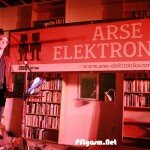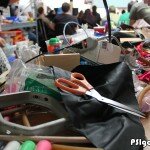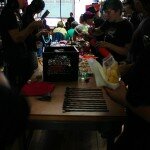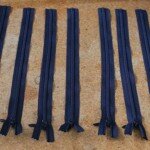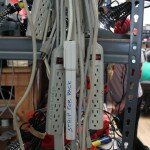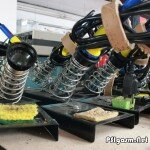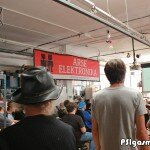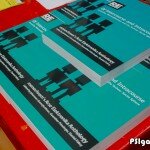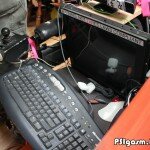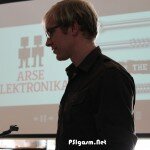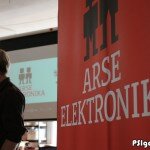This project has been getting a lot of great attention among sex folks, hacker folks, and the general nerd community. We’re super excited that so many awesome people are interested! However, we’re swamped trying to revolutionize the porn industry, deconstruct the patriarchy, and build quantum computers. Not enough is getting done on the hard nerdy problems of this project, and the bottleneck is the Mayhems’ schedule. We are busy, but sex science must go on!
The answer is simple. We’ve been talking up the open source nature of this project, so it’s time to get the community involved! Y’all are brilliant and awesome, and we need your help on the PSIgasm. Unfortunately, the project is still at a point where there is a rather high barrier for entry, which is why we haven’t done this earlier. It’s not as easy as we would like for anyone interested to jump right in. We need help getting it to that point.
I am listing some tasks that we need help with below. Most of them require a lot of skills, knowledge, and sometimes money. If you have the ability to help out with any of these tasks, please please please contact us and take one of them on. The people who volunteer their time at the outset will get a lot of control over how this project grows. If not, hang tight for now. When the project moves forward, we will definitely need your help.
Analog Electronics
What we have:
We have gerber files and parts lists for three boards which connect to one another, to the body of the device, and to an Arduino Fio. On these boards are preamps, lock-in amps, filtering, ADCs, and and accelerometer. We also have annotated schematics which make the functional flow of the circuitry fairly clear, but the schematics are only images and are not linked to the board layout. There are a few known bugs in the PCB design, and possibly some more unknown ones.
What we need:
We need someone to write up a nice schematic for these designs in an open source friendly layout software, linked to an actual board layout and the specific parts in the BOM. Known bugs should be fixed, and contributions to the design generally are always appreciated. We would like to set up and share SPICE simulations of the circuitry, so that people can help debug the design without actually buying the PCBs and chips. All of this will be shared with the community through the infrastructure that we’re asking for help with below.
Silicone Device Body
What we have:
3D design files (any format you like, I made them in Solidworks) of the mold for the body of the device, the mounting plate, all of the PCBs, the box, and the sensors. You can output the mold design files directly to a 3D printer, which will let you cast your own silicone devices. Some of that parts, including the metal electrodes and the mounting plate, currently need to be machined from aluminum.
What we need:
We want someone to test the process of 3D printing molds on an open source 3D printer such as the RepRap or equivalent. It would be awesome if someone wanted to make several devices and really work out the kinks in the process of creating the device body. Ideally you would then write up a how-to doc for anyone else interested in making one.
Another task is to shop around and find the easiest way for people who may not have machine shop access / expertise to get a hold of the custom metal parts required. Research should be done about cheap ordering services, or perhaps a resource guide for local machining spaces like TechShop in the Bay Area. Design improvements are of course always welcome.
Crowdsourcing Infrastructure
What we have:
Good intentions, some files we want to share, and some tasks we want help with.
What we need:
We need a central repository for all of the files associated with this project. People should be able to access all of the files and submit changes and improvements. It would be awesome to have functionality to split up development into small modular tasks for individuals to take on. Active members of the open source community, especially the open source hardware community, will know what we need here better than I do. Whatever solution we use should handle hardware designs in arbitrary file formats, as well as code (ASCII text) and documentation. We need ideas about the best way to do this, and when there is some consensus about the best platform we also need someone to actually sit down and set it all up for us.
Software
What we have:
We have Arduino firmware written in the Arduino language (mostly C) which reads data from the ADCs as quickly as possible, buffers it, averages it, and transmits it to a PC on command. It works but is a bit buggy and probably not as efficient as it could be. We also have a PC program to get data from the device and display it on running graphs. This is currently written in C#. It is also really buggy and messy. There is also a Labview version, but that’s far too proprietary to be appropriate for the project’s future. Don’t judge me too hard – it was all hacked together in a hurry.
What we need:
The most important thing would stable software to accomplish the tasks above as efficiently as possible. On the firmware end, you will need to look in detail at the datasheets both for the Arduino and for the ADC to choose the optimal sample frequency and to multiplex as efficiently as possible. On the PC software, there should be a stable, stand alone program that works across platforms and OSes to talk to the device, record data, and graph results. Once the basic functionality is there, it would be great to have automatic datasharing functionality.
It may end up being easiest for the software to be entirely rewritten from scratch by a dedicated guru. This might be a difficult / thankless task until the hardware moves forward. On the other hand, you can help with this part without leaving your desk or buying anything.


